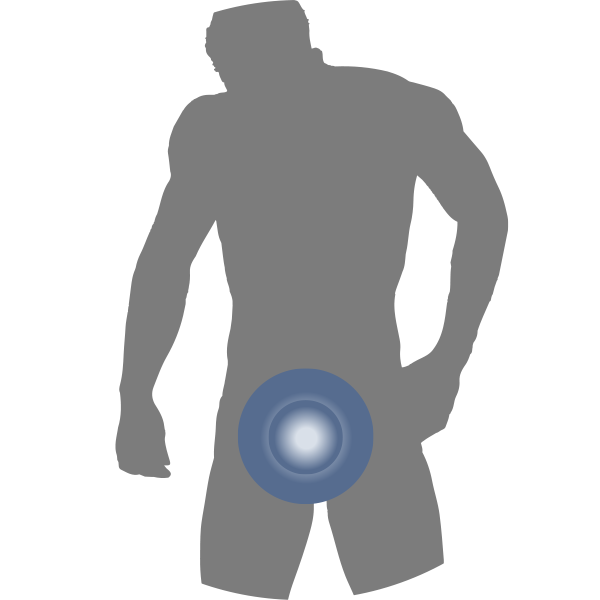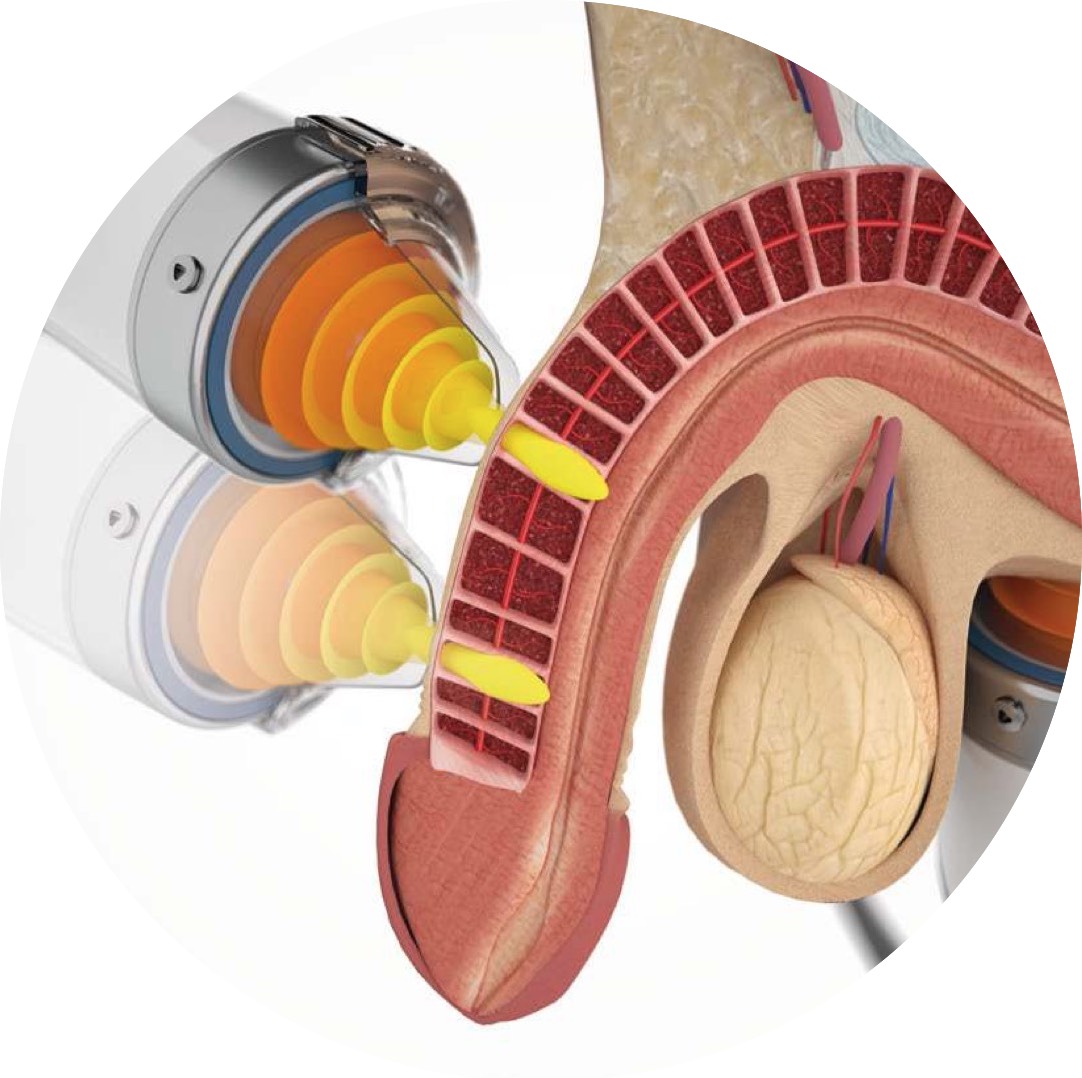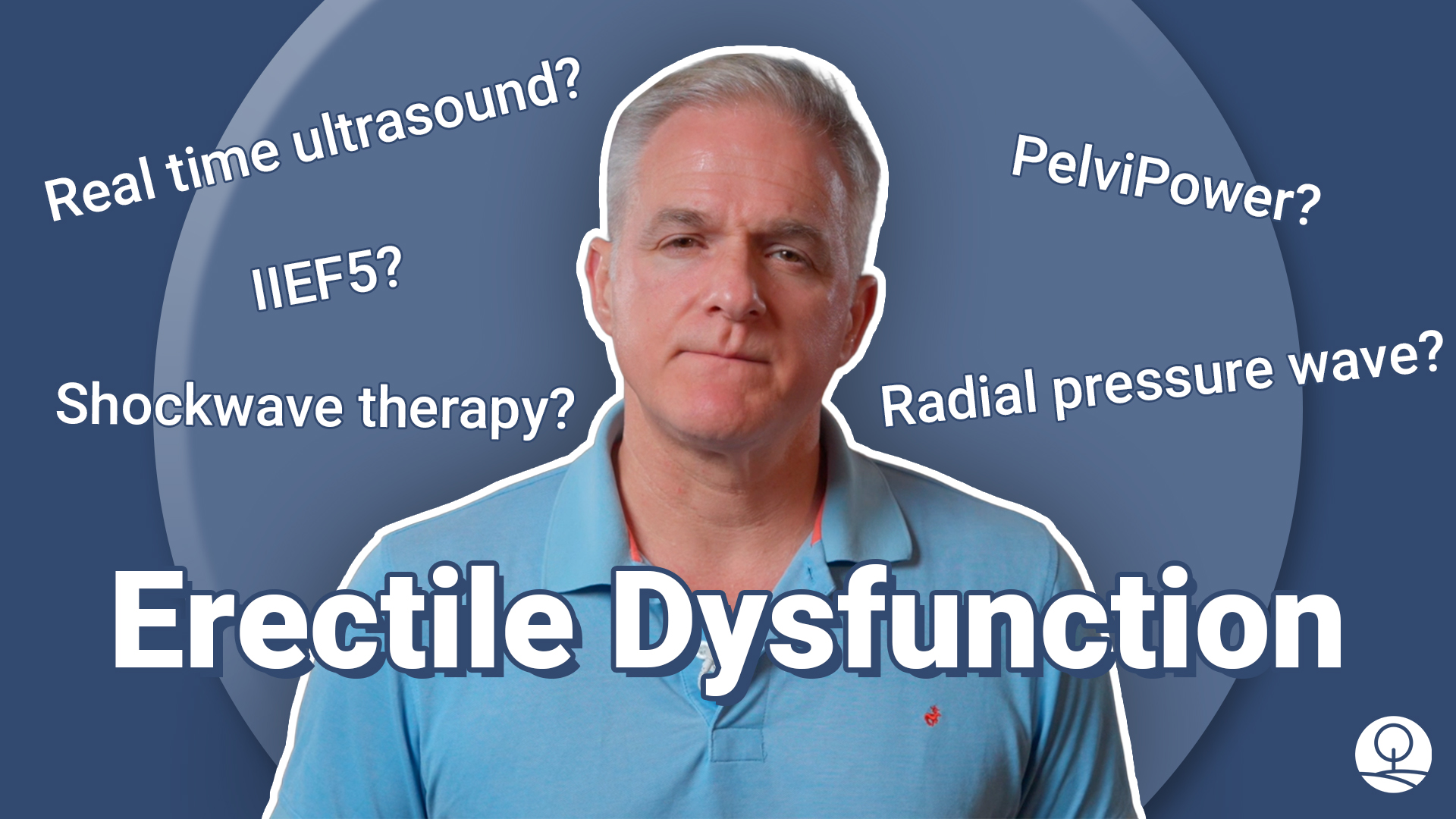Erectile Dysfunction Focused Shockwave

Rejuvenating male performance
Erectile dysfunction (ED) is a common concern affecting approximately 40% of men over the age of 40 and increasing in prevalence to nearly 70% for those aged 70 and above.
Good blood vessel function plays a crucial role in ensuring the ability to achieve and maintain a satisfying erection. When blood vessels are functioning at their best, they efficiently deliver the necessary blood flow to the penis, leading to a firm and long-lasting erection. However, issues such as atherosclerosis (the narrowing of arteries due to plaque buildup) or endothelial dysfunction (affecting the inner lining of blood vessels) can restrict blood flow, resulting in erectile difficulties.
Focused Shockwave Therapy is an innovative approach backed by scientific research to provide a natural solution for men experiencing vascular erectile dysfunction.
Watch: Guide to Focused Shockwave Treatment
Our Physiotherapist, Nathan, sat down to discuss everything you need to know about Focused Shockwave Therapy, and what you can expect from our treatment plans.
“When you understand the process you can make the best decision for yourself, with no surprises, and no pressure.”

Who Can Benefit?
Whilst numerous clinical studies have shown the efficacy of focused shockwave therapy for ED, it is important to look at the pooled data from the highest quality and comparable research. This meta-analysis research indicates that the men most likely to have the best response to focused shockwave fall into the following sub groups:
Vasculogenic ED
Vasculogenic ED, which is primarily caused by impaired blood flow to the erectile tissue is the most responsive to FSWT. The shockwaves’ mechanism of action aligns well with the need for improved vascularisation, and studies have shown consistent improvements in patients with this underlying cause.
Mild to Moderate ED
Men with mild to moderate ED tend to respond more favourably to FSWT than those with severe ED. The therapy’s ability to promote tissue repair and angiogenesis appears to be more effective when addressing less severe cases of ED.
Responders to PDE5 Inhibitors
Individuals who have responded positively to phosphodiesterase type 5 (PDE5) inhibitor medications like Viagra, Cialis, or Levitra might also benefit from FSWT. This suggests that FSWT could be used as an adjunct therapy for enhancing the effects of these medications or as an alternative for those who prefer non-pharmacological options.
Younger Age Group
While FSWT has shown promise across various age groups, younger men (below 60 years old) with ED tend to experience better outcomes. This could be attributed to their generally healthier vascular systems and higher potential for tissue regeneration.
However, it should be noted that you do not have to be suffering from Erectile Dysfunction to benefit from this treatment. Preventing the onset of age-related erectile dysfunction by keeping the penis healthy will benefit any man seeking to enhance his sexual pleasure and performance.

What Are The Benefits?
- Enhanced erections
- Improved sexual performance
- Increased sensation in the penis
- More spontaneous erections
- Better orgasms
- Simple, painless and non-invasive
- Little to no side effects
- No downtime

How Does Focused Shockwave Therapy Work?
Focused Shockwave Therapy is a non-invasive and totally painless medical treatment that involves delivering audible high energy shockwaves to specific areas of the penis.
These shockwaves trigger the release of growth factors, stimulate new blood vessel formation (angiogenesis), and rejuvenate the existing ones. The improved blood flow to the penile tissues promotes stronger, harder, longer lasting erections.
Who is Focused Shockwave Not Suitable For?
- Men with a bleeding disorder or taking anticoagulant medication
- Men with an active infection in the area
- Men who have had pelvic surgery should be given time to fully heal
- Men that have had a non nerve sparing radical prostatectomy surgery
How Long Do Results Last?
Whilst individual results can vary, focused shockwave therapy for ED has shown potential to provide lasting improvements in erectile function, with some studies suggesting benefits lasting up to two years or more.
Treatment Procedure
Focused shockwave therapy involves a series of treatment sessions. Depending on the individual, 6-12 sessions may be recommended. Each 30 minute session is performed twice per week for 3 weeks. Six sessions are performed over 3 weeks, then a rest interval of 4-8 weeks to assess effect, followed by another 6 sessions over 3 weeks if required. This is because the maximum effect is evident 1 -3 months after the treatment has ended.
The therapy is painless and requires no recovery or down time.
Investment
Initial 60 Min Assessment + Treatment – $230
Follow up Focused Shockwave Therapy (fSWT) Treatment Session – $200
Pelvic Functional Magnetic Stimulation (pFMS) Session – $130
Combined fSWT + pFMS value bundle Session – $290


